
Baton Rouge - Learn about claw disease, nasal dermatoses and other dermatological ailments at Louisiana State University (LSU) conference this fall.

Baton Rouge - Learn about claw disease, nasal dermatoses and other dermatological ailments at Louisiana State University (LSU) conference this fall.

Douglas DeBoer, DVM, DACVD, with the University of Wisconsin-Madison's School of Veterinary Medicine, shares his recommendations on how to manage atopic dermatitis.
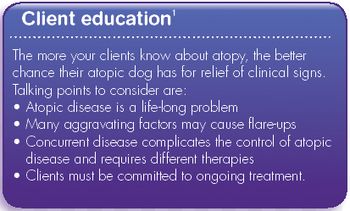
The article breaks down the method and results of a double-blind study that compares the performance of three commercial veterinary diets during in-home management of clinical signs in atopic dogs. Also included Case study Cindy

A recent double-blind study compares the performance of three commercial veterinary diets during in-home management of clinical signs in atopic dogs. Also included-Case study-"Cindy"
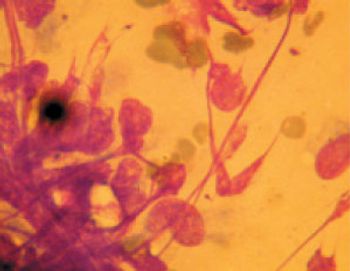
A slideshow by Dr. Wayne Rosenkrantz.

Cutaneous cytology immediately and inexpensively reveals whether infectious, inflammatory, or neoplastic processes are affecting the skin, and it can help you determine which diagnostic path to continue on.
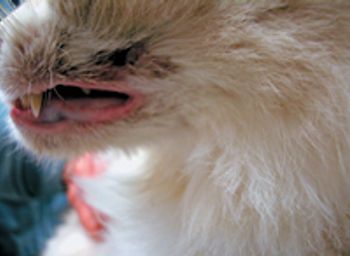
Need-to-know information about its mechanism of action, pharmacokinetics, and adverse effects.

A systematic approach to a dermatologic diagnosis begins with a good history followed by a thorough physical examination.

Pruritus is defined as an irritating, nonadapting cutaneous sensation that evokes the impulse to scratch.
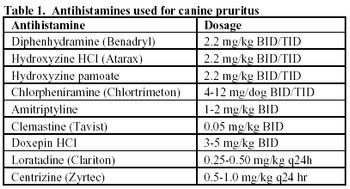
Canine pruritus has many different etiologies and pathophysiologic mechanisms.

Keratinization and seborrheic disorders are both used interchangeable to describe microscopic and gross changes resulting from multiple etiologies.

The symptomatic treatment of feline pruritus is often complicated by the multiple predisposing causes including allergy, dermatophytosis, parasitic, viral, autoimmune and neoplastic diseases.
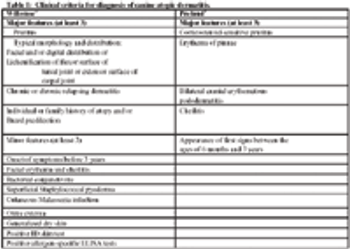
Canine atopy has traditionally been defined as an inherited predisposition to the development of IgE (reaginic antibodies) to environmental allergens resulting in allergic disease.
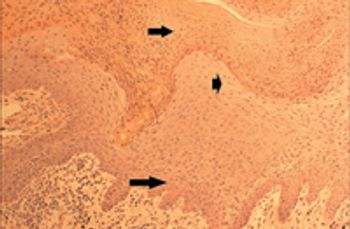
An 8-year-old 46.3-lb (21-kg) female spayed mixed-breed dog was referred to the Purdue University Veterinary Teaching Hospital for evaluation of lethargy, inappetence, weight loss, and alopecia of several months' duration.

An ongoing study on flea susceptibility indicates that fleas show no signs of reduced susceptibility to the active ingredient in several flea products.

As a veterinary technician, the vital role you play with dermatology patients cannot be emphasized enough. Obtaining an accurate history, correctly performing diagnostic procedures, and educating clients are essential for the successful management of patients with dermatologic conditions.

Despite modern advances in flea control, flea allergy dermatitis continues to be the most common skin disease seen in general small animal practice. Practitioners and technicians must diffuse owners' belief that it is impossible for ectoparasites to exist on their pets.

The majority of common dermatologic conditions all start with the adherence of pathogens to the skin. A new topical therapy proven to work with the skin's natural defnse mechanisms prevents bacteria from adhering to the skin and thereby reducing infections and inflammation.

Most flea-control products kill fleas fast enough to interfere with most egg production, which breaks the flea life cycle. However, they're not able to prevent fleas from biting and feeding before they are killed. This article can provide insight into the potential effectiveness of flea-control compounds in controlling flea bites and managing flea allergy dermatitis.

Flea allergy dermatitis is the most common dermatologic disease of dogs. As a veterinary technician, you need to understand why managing flea bites is so improtant for allergic dogs-so you can relate this important information to clients.

Orlando, Fla - A new survey shows that tick populations are not only increasing in number but tick-borne diseases are showing up in every state in the country.

Dr. Christine Olver discusses how iron deficiency is identified and treated in dogs as well as when practitioners should perform cytologic exams.
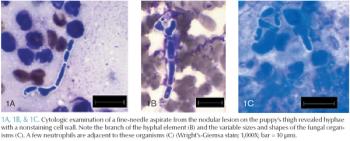
A 3-month-old intact male boxer was presented for a preadoption evaluation at the Foster Hospital for Small Animals at Tufts University after being rescued in North Carolina.
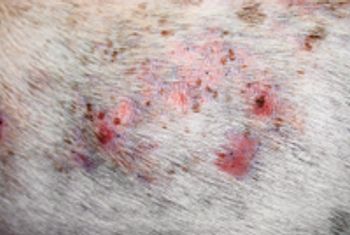
Canine solar dermatitis, or chronic sun damage to the skin, is a common dermatologic disorder in hot, sunny climates.

There has been an ongoing debate over ototoxicity produced by topical medications.